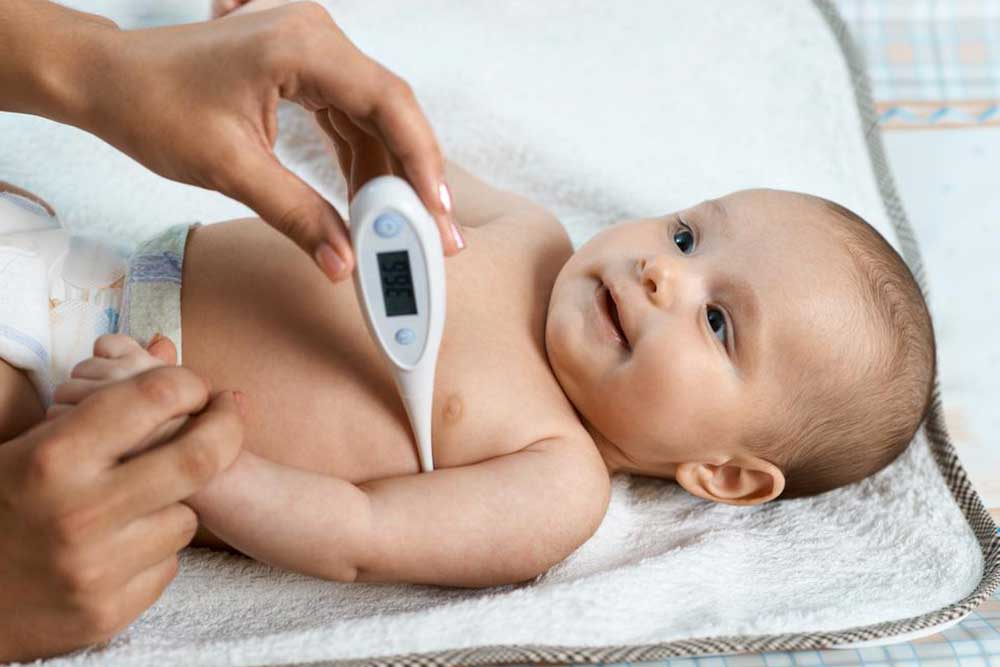Comprehensive Guide to Body Temperature: Understanding Its Importance and How to Monitor It
This comprehensive guide explores the importance of understanding body temperature, how to measure it accurately, and what deviations indicate. It covers normal ranges across different age groups, symptoms of fever, factors influencing temperature, and preventive health measures. Maintaining awareness of body temperature helps in early detection of illnesses and supports overall health management. Essential for caregivers, healthcare professionals, and individuals alike, this article emphasizes the significance of regular temperature monitoring and proper measurement techniques to promote health and well-being.

Comprehensive Guide to Body Temperature: Understanding Its Importance and How to Monitor It
Accurate insights into body temperature and its health implications
Body temperature is a vital sign that provides critical information about our overall health status. A typical human body's core temperature hovers around 98.6°F (37°C), but it can vary slightly depending on several factors. Recognizing the significance of body temperature, understanding how to measure it accurately, and knowing what deviations mean can help detect underlying health issues promptly. Fever, or pyrexia, is one of the most common abnormalities and often signals infection or other health concerns requiring medical attention.
Understanding normal body temperature ranges
While the average normal body temperature is considered 98.6°F (37°C), it's important to note that normal ranges can fluctuate slightly among different individuals and across various conditions. Factors like age, time of day, physical activity, and hormonal cycles influence temperature readings. In general, normal body temperature ranges from about 97.7°F (36.5°C) to 99.5°F (37.5°C). Recognizing these variations is essential for accurate health assessment.
How body temperature is measured
Measuring body temperature accurately is crucial for diagnosing sickness or monitoring health. There are several methods involved, each suitable for specific contexts and age groups:
Oral thermometers: Commonly inserted under the tongue, providing convenient and reliable readings in older children and adults.
Rectal thermometers: Inserted into the rectum, typically used for infants and young children, offering the most precise readings of core temperature.
Ear thermometers: Measure temperature via the eardrum, suitable for quick readings, but can be affected by earwax or improper placement.
Forehead or temporal artery thermometers: Use infrared sensors to read skin temperature — ideal for quick assessments, especially in clinical settings.
Axillary thermometers: Placed under the armpit, offering a less invasive option but sometimes less accurate due to external factors.
Important considerations include avoiding measurement immediately after eating hot or cold food, exercising, or smoking, as these can influence readings. The accuracy of measurements depends also on consistent placement and proper calibration of thermometers.
Factors influencing body temperature
Several internal and external factors can influence body temperature:
Time of day: Temperatures tend to be lower in the early morning and higher in the late afternoon or early evening.
Age: Infants and seniors often have different normal temperature ranges compared to healthy adults.
Physical activity: Exercise temporarily elevates body temperature.
Hormonal changes: In women, menstrual cycles can cause variations in temperature.
Environmental conditions: Exposure to hot or cold environments affects external body temperature.
Recognizing fever and its symptoms
Fever is defined as a body temperature exceeding 100.4°F (38°C) in rectal readings or equivalent thresholds in other measurement sites. It usually indicates an immune response to infection, inflammation, or other health issues.
Symptoms accompanying fever often signal underlying illness, including:
Weakness and fatigue
Dehydration and dry mouth
Headaches
Muscle aches and pains
Loss of appetite
Chills and shivering
Excessive sweating as fever breaks
Irritability, especially in children
Neck stiffness or pain
Eye discomfort or sensitivity to light
Dizziness or feeling lightheaded
Persistent or very high fevers may require medical intervention to prevent complications, especially in vulnerable populations like infants, the elderly, or those with underlying health conditions.
Variations in normal body temperature across age groups
Body temperature norms shift with age, making age-specific standards vital for accurate diagnosis. For example:
Infants: The American Academy of Pediatrics reports that healthy infants have an average temperature ranging from 97°F to 100.3°F. A rectal temperature of 100.4°F or higher typically indicates fever.
Children: The normal temperature varies around 98.6°F, with lower values in the morning (about 97.4°F) and higher in the afternoon or evening (up to 99.6°F).
Adults: Average oral temperatures are around 98.2°F; underarm readings tend to be slightly lower (around 97.7°F), and rectal or ear temperatures can be approximately 99.5°F.
Preventative measures against fever
Preventing fever largely involves minimizing exposure to infectious agents. Maintaining good hygiene practices, such as regular handwashing with soap and water, avoiding contact with infected individuals, and keeping living environments clean, can substantially reduce the risk of infection. Additionally, staying up-to-date on vaccinations and practicing healthy lifestyle habits fortify the immune system’s ability to ward off illnesses.
In case of outbreaks, wearing appropriate protective gear and practicing social distancing are effective strategies to prevent the spread of contagious diseases that cause fever.
Understanding body temperature, how to measure it correctly, and recognizing early symptoms of abnormal variations are fundamental steps in maintaining health and detecting illness early. Whether for children, adults, or seniors, monitoring body temperature plays a crucial role in health management and disease prevention, supporting timely medical intervention when necessary.





